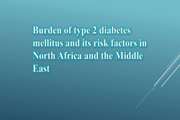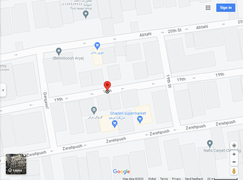Modification of Retina Light Damage by Saffron
Modification of Retina Light Damage by Saffron
Background and objectives: Saffron is a known flavor with medicinal properties. Persian and Chinese medicines use saffron to treat several diseases. Saffron has neuroprotective and various other effects. In the present study the combinatory effects of saffron together with intensive light exposure were studied
Introducing critical proteins related to liver ischemia/reperfusion injury
Introducing critical proteins related to liver ischemia/reperfusion injury
Aim: The current study aimed to introduce the key proteins involved in liver ischemia/reperfusion (I/R) injury through protein-protein interaction (PPI) analysis
Wharton's jelly mesenchymal stem cells transplantation for critical limb ischemia in patients with type 2 diabetes mellitus
Wharton's jelly mesenchymal stem cells transplantation for critical limb ischemia in patients with type 2 diabetes mellitus
Peripheral artery disease (PAD) affects more than 230 million people worldwide, with approximately 11% of patients presenting with advanced-stage PAD or critical limb ischemia (CLI). To avoid or delay amputation, particularly in no-option CLI patients with infeasible or ineffective revascularization, new treatment strategies such as regenerative therapies should be developed. Mesenchymal stem cells (MSCs) are the most popular cell source in regenerative therapies.
Chitosan based extruded nanofibrous bioscaffold for local delivery of mesenchymal stem cells to improve diabetic wound healing
Chitosan based extruded nanofibrous bioscaffold for local delivery of mesenchymal stem cells to improve diabetic wound healing
Background: Mesenchymal stem cells (MSCs)-based treatment strategy has shown promise in bolstering the healing process of chronic wounds in diabetic patients, who are at risk of amputation and mortality. To overcome the drawbacks of suboptimal cell retention and diminished cell viability at the injury site, a novel nanofibrous biomaterial-based scaffold was developed by using a controlled extrusion of a polymeric solution to deliver the cells (human adipose-derived MSCs (ADMSCs) and placenta-derived MSCs (PLMSCs)) locally to the animal model of diabetic ulcers
Retraction Note: Mesenchymal stem/stromal cells as a valuable source for the treatment of immune-mediated disorders
Retraction Note: Mesenchymal stem/stromal cells as a valuable source for the treatment of immune-mediated disorders
Over recent years, mesenchymal stem/stromal cells (MSCs) and their potential biomedical applications have received much attention from the global scientific community in an increasing manner. Firstly, MSCs were successfully isolated from human bone marrow (BM), but in the next steps, they were also extracted from other sources, mostly from the umbilical cord (UC) and adipose tissue (AT).
Burden of type 2 diabetes mellitus and its risk factors in North Africa and the Middle East
Burden of type 2 diabetes mellitus and its risk factors in North Africa and the Middle East
The prevalence of Type 2 Diabetes Mellitus (T2DM) in the North Africa and Middle East region is alarmingly high, prompting us to investigate the burden and factors contributing to it through the GBD study. Additionally, there is a lack of knowledge about the epidemiological status of T2DM in this region, so our aim is to provide a comprehensive overview of the burden of T2DM and its associated risk factors








